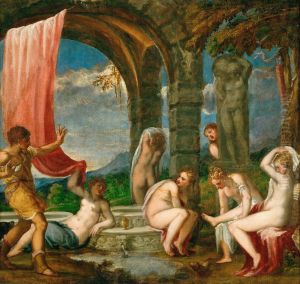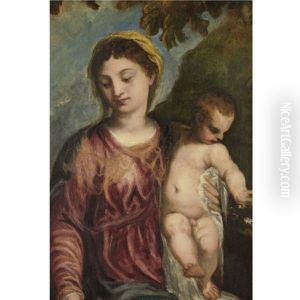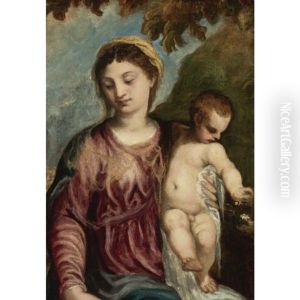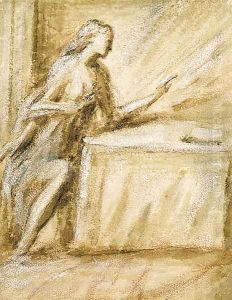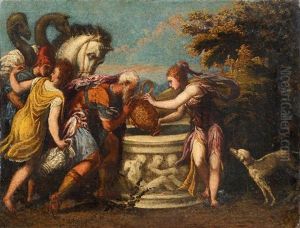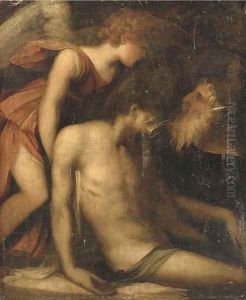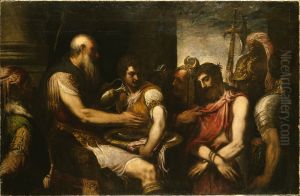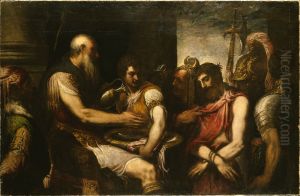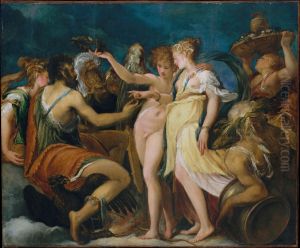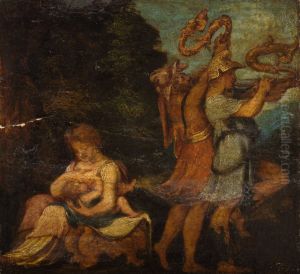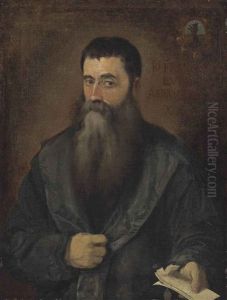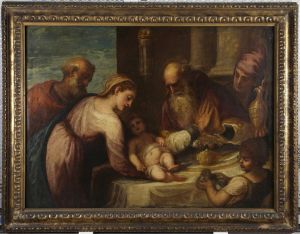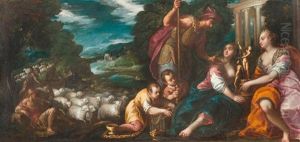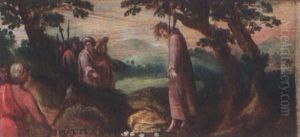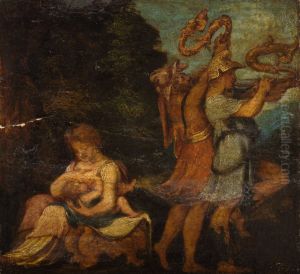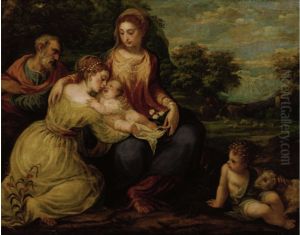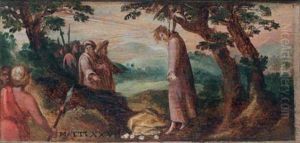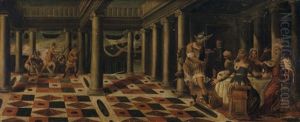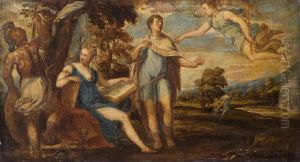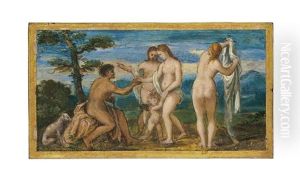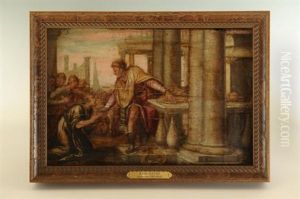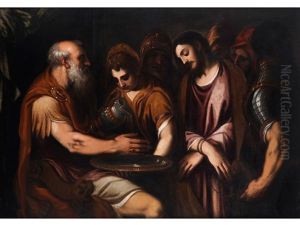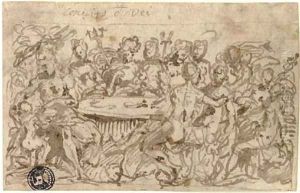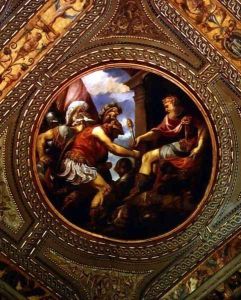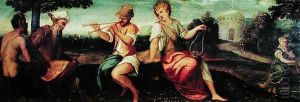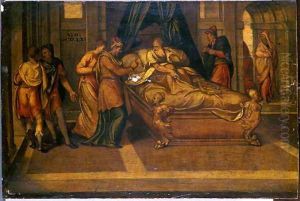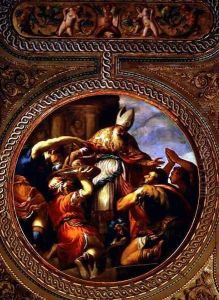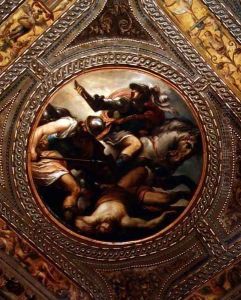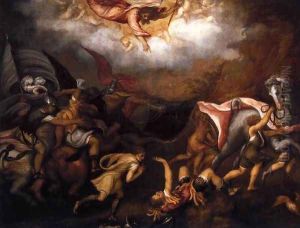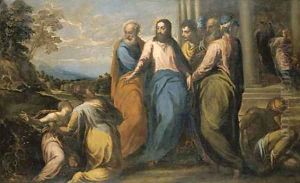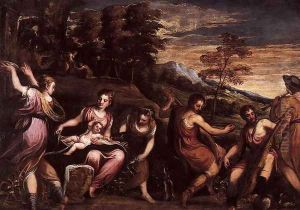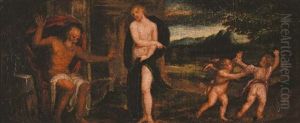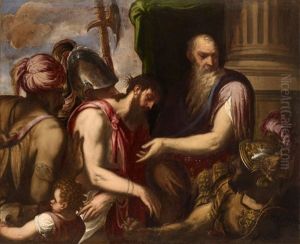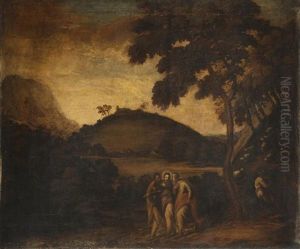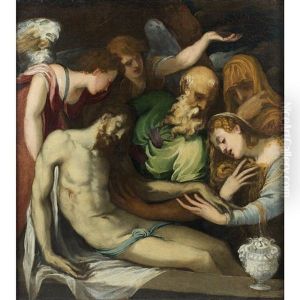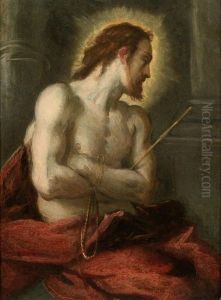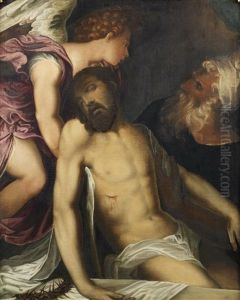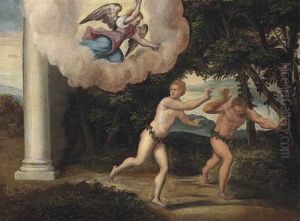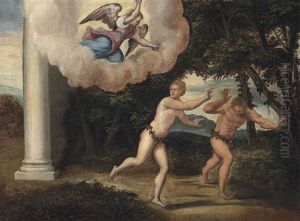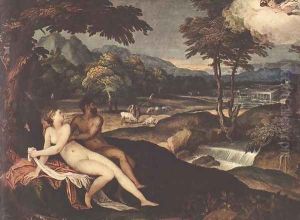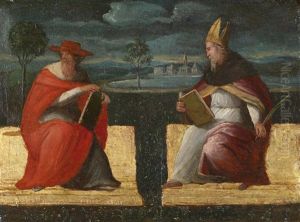Andrea Schiavone Paintings
Andrea Schiavone, born Andrea Meldolla, was a notable figure in the Renaissance art scene, primarily active in Venice during the 16th century. His exact birthdate is uncertain, with estimates ranging between 1510 and 1515, and he hailed from Zara, Dalmatia (now Zadar, Croatia), which was then part of the Republic of Venice. Schiavone's work is characterized by a distinctive blend of Venetian and Mannerist influences, showcasing his ability to merge the rich color schemes typical of Venetian painting with the elongated forms and dynamic compositions found in Mannerism.
Schiavone's artistic journey began under the tutelage of local masters in Zara before he moved to Venice, where he further developed his craft. He was deeply influenced by the works of Parmigianino, a leading figure in the Mannerist movement, and the Venetian masters, particularly Titian and Tintoretto. This unique combination of influences is evident in his paintings, which are known for their vibrant colors, fluid lines, and expressive figures.
Throughout his career, Schiavone worked across various mediums, including painting, etching, and drawing. He was one of the early adopters of etching in Venice, a technique through which he achieved great acclaim. His etchings are celebrated for their innovative use of line and shadow, contributing significantly to the development of the medium in Italy. In addition to his prints, Schiavone's paintings and frescoes adorned many Venetian churches and noble residences, where his talent for narrative and decorative composition could be fully appreciated.
Despite his contributions to the Venetian Renaissance and the development of Mannerism, Schiavone has often been overshadowed by his contemporaries. However, modern scholarship has begun to reassess his work, acknowledging his role in bridging the gap between the High Renaissance and the full flowering of Mannerism. His ability to synthesize diverse artistic influences into a coherent and innovative style has earned him a place among the notable artists of his time.
Andrea Schiavone passed away in 1563 in Venice. His legacy, though underrecognized for centuries, continues to be revisited and celebrated for its innovation and influence on the evolution of European art. His works remain in collections and museums around the world, testifying to his skill and unique artistic voice.
